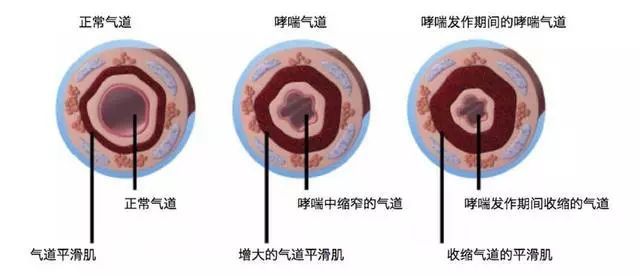Hot metal spraying dust pollution is not something to be ignored, it must be taken seriously!
Release time:
2019/07/09
Source:
Thermal metal spraying dust,忍无可忍,无需再忍 (Suffering to the limit, no need to endure any longer)
Three words:“Get rid of it”
Thermal spraying refers to heating and melting coating materials, atomizing them into extremely fine particles using a high-speed air stream, and spraying them onto the workpiece surface at a high speed to form a coating. By selecting different coating materials as needed, one or several properties such as wear resistance, corrosion resistance, oxidation resistance, and heat resistance can be obtained.
Some common thermal spraying processes include plasma arc spraying, combustion spraying, arc spraying, wire flame spraying, high-velocity oxy-fuel spraying, cold spraying, and powder flame spraying.
Thermal spraying of metals is used across a wide range of industries and is a common application in metalworking, including automotive, agriculture, aerospace, gas turbines, gas, or petrochemicals.
/ Characteristics of Thermal Metal Spraying Dust /
The process of pollutant or fume generation varies, as does the consumption of materials. The particle size range can be from more than 50 µm to far below 1 µm. Dust and fume generation rates are high. Pollutants from arc wire spraying have a high proportion of fine particles and a higher fume generation rate compared to other processes.
In addition, when these materials are exposed to high temperatures, complex metal compounds such as hexavalent chromium are generated, and the particles can also be abrasive, especially those used in metal spraying.
/ Hazards of Thermal Metal Spraying Dust /
The materials used in thermal spraying are thermal spraying powders. A large amount of dust is generated during the thermal spraying process, which includes fumes and dust. Particles with a diameter of less than 0.1μm are called fumes, and particles with a diameter between 0.1μm and 10μm are called dust.
The temperature of thermal spraying is very high. The temperature of flame spraying is above 3000℃, the temperature of arc spraying is above 6000℃, and the plasma temperature is as high as tens of thousands of degrees. Such high temperatures cause the evaporation of metal elements, and the metal vapor rapidly condenses and oxidizes in the air to form thermal spraying dust of different particle sizes. The dust remains in the air for a relatively long time and floats in the working environment air in the form of aerosols.
The harm of metal dust to the human body depends on the physical and chemical properties of the dust, the amount of dust inhaled by the human body, the route of dust invasion, and the deposition site of the dust. Among them, it can cause respiratory diseases such as asthma and bronchitis (as shown in the figure below).

/ Control Methods for Thermal Metal Spraying Dust /
(1) Source Control
Capturing and controlling the source of thermal spraying dust and fumes. Source capture involves using various types of hoods to extract pollutants to achieve or near source protection of workers and prevent fume migration to other facilities.
Source capture is the most effective and requires the least energy and initial investment to accomplish. Source capture can be achieved using exhaust arms or local fixed hoods.
(2) Ventilation Isolation
A safety enclosure isolates the thermal spraying process from the rest of the equipment and protects the contained area. Safety enclosures are commonly used where hoods near the spraying area are impractical, but the process can be isolated from other parts of the factory. An example is a booth or a zoned area where ventilation is used to control and collect dust, fumes, and gases from the process.
(3) Dust Removal Equipment
In the powder coating process, especially in thermal metal coating systems, powder coating recovery devices and dust filtration dust removal systems must be installed. Whether the air discharged to the atmosphere or the air used in the cycle should meet national environmental protection emission standards, which is currently the most effective way to control dust.
2024-09-17
Visiting tens of thousands of enterprises, resolving difficulties, optimizing the environment, and promoting development; using practical and effective measures to alleviate the difficulties of enterprises and continuously enhance their confidence in development. Currently, Chengdu is deeply studying and implementing General Secretary Xi Jinping's important instructions on the work in Sichuan and Chengdu, implementing the provincial Party committee's new requirements of "five focuses" and "five new chapters", taking the task of striving to boost the economy and construction as the top priority, focusing on promoting economic stabilization and recovery, and striving to achieve effective improvement in the quality of the economy and reasonable growth in quantity. This station launches a special report on "Visiting tens of thousands of enterprises, resolving difficulties, optimizing the environment, and promoting development", continuously focusing on this long-term work.
Analysis of Thermal Spraying and Sandblasting Processes
2020-04-17
To ensure high-quality thermal spraying, thorough preparation is essential. Pre-treatment processes are closely related to the overall quality of thermal spraying. Good pre-treatment ensures good thermal spraying quality, while poor pre-treatment leads to poor thermal spraying quality. Therefore, this article focuses on the pre-treatment process of thermal spraying and provides a detailed description of the sandblasting process.
2020-03-25
The Science and Technology Service Port, in response to the technological needs of enterprises in Suining City, held a service docking and exchange activity at the invitation of the Suining City SME Service Center. This service docking and exchange activity served two purposes: firstly, it built a communication bridge between member units of the council and service enterprises, helping to promote enterprise technological improvement and providing technological solutions, thus effectively playing the role of a bridge and link for the Science and Technology Service Port; secondly, it enhanced understanding and cooperation with local public service institutions in Suining, laying the foundation for the Science and Technology Service Port to further expand its service areas, better serve SMEs in Suining, promote enterprise technological upgrading and transformation, and promote the development of the local socio-economy.



